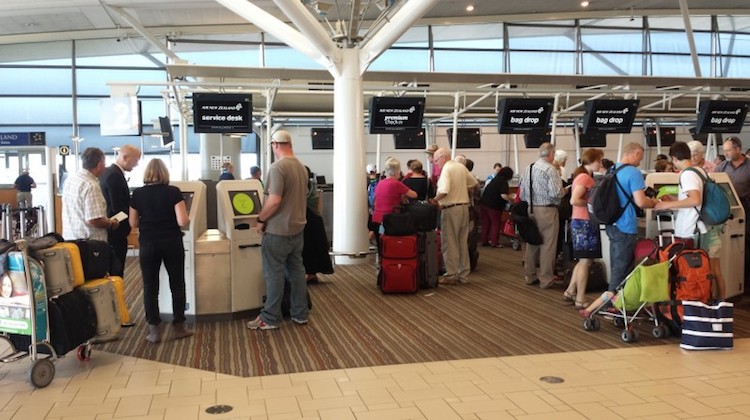
Air travel technology provider SITA says it is working with airports, airlines and the Australian government to expand the use of biometrics as part of efforts to help speed up and improve the passenger experience.
In March 2017, Air New Zealand, Brisbane Airport and SITA commenced an Australia-first trial featuring the use of facial recognition technology for passengers departing on Air New Zealand flights from Brisbane.
Under the trial, passengers flying Air New Zealand from Brisbane approach a self-service checkin kiosk featuring SITA Smart Path technology.
At checkin, the kiosk creates a “single secure token” using sophisticated biometrics – which in this case is the passenger’s face – that is linked to passenger’s travel documents.
When it comes time to get on the aircraft, passengers simply walk through an automated boarding gate which uses facial recognition technology to verify the correct passenger is boarding the correct aircraft, without the need to present a boarding pass, passport or travel document.
SITA president for Asia Pacific Sumesh Patel said the trial had shown passengers would spend less time at checkin and helped speed up boarding.
Further, it was hoped the use of biometrics could be expanded to other aspects of the passenger experience at the airport, such as for self-service bag drop and clearing immigration, as well as potentially duty free sales and entry into airport lounges.
“These are other pieces of the trial that we are also working with them and that will include the other touchpoints,” Patel told reporters in Sydney on Thursday.
“Every touchpoint you will use the biometric details.”
VIDEO: A look at SITA Smart Path Technology at Brisbane Airport on SITA’s YouTube channel.
SITA already works with the Australian government on its use of advance passenger processing (APP) for all international flights departing the country, which was switched on in 2016.
Under this system, passengers are pre-cleared for departure when checking in online, via an airport kiosk or at the counter, when their names and other personal information is checked against government watchlists in real-time.
There implementation of Outbound APP followed Australia already pre-clearing all international travellers flying into the country.
SITA is also part of similar trials with the use of biometrics in airline and airport operations in the United States with Jetblue and the US Customs and Border Protection (CBP) at Boston Logan airport, as well as at Hamad International Airport in Doha.
The increasing use of self-service options by airlines and airports was reflected in the recent SITA 2017 Air Transport IT Trends Insights report, which showed airports around the world were projected to spend US$8.4 billion on IT related matters in 2017, a 20 per cent rise from US$7 billion actual spending in 2016.
Further, the report said airlines were also lifting their IT budgets, with projected spending forecast to rise to US$24.3 billion in 2017, up 11 per cent from US$21.9 billion in 2016.
In terms of self-service options, the SITA report found 51 per cent of airports planned to implement self boarding gates using biometrics and travel documents by 2020.
“Basically it is helping to speed up or help overall the passenger experience,” Patel said.
“In terms of the passenger trend survey we did, every passenger wanted to have overall control of their own journey and biometrics is basically an answer.”
And in a reflection of the growing familiarity with online options for travel, some 90 per cent of travellers said they booked their flights with self-service technologies.
The increasing use of automated or self-service options is being rolled out as industry forecasts show the number of air travellers exceeding seven billion a year by 2035, compared with about 3.5 billion a year currently, with the bulk of that growth expected to occur in the Asia Pacific region.
KATE AND LEO HELPING EASE QUEUES
Looking beyond biometrics, SITA has a number of other trials underway to further improve the passenger experience.
These include two robots, KATE and LEO.
KATE is a mobile checkin kiosk currently at Osaka Kansai Airport. The mobile kiosk is able to be deployed at peak times to help alleviate the queueing time for checkin.
Patel said the KATE the robot has been very well received at Osaka Kansai, with eight airlines signing up for the trial.

Meanwhile, LEO is a mobile bag drop robot that has been on trial at Geneva Airport. It can check passengers in, print bag tags and carry two suitcases for loading into the aircraft hold.
“So it will basically see where the congested area of the airport is and can be automatically deployed,” Patel said of KATE and LEO.
“Robots will come to you rather than you going and finding where to drop my bags or where to checkin.”
VIDEO: A look at SITA’s LEO Robot trial at Geneva Airport from SITA’s YouTube channel.















